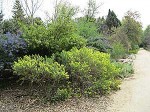 If you are lucky enough to visit this garden in March, after the rainy season, you are in for a big treat. You probably expect to see lots of cactus and you will, but you will see much much more. The rains during the winter months allow the plants to put on fresh green coats, come into bloom, and fill the garden with color. The 86 acre garden is dedicated exclusively to California’s native plants and promotes botanical knowledge, conservation and landscape use of California’s native plants with its library, herbarium, laboratory facilities and active graduate program in Botany.
If you are lucky enough to visit this garden in March, after the rainy season, you are in for a big treat. You probably expect to see lots of cactus and you will, but you will see much much more. The rains during the winter months allow the plants to put on fresh green coats, come into bloom, and fill the garden with color. The 86 acre garden is dedicated exclusively to California’s native plants and promotes botanical knowledge, conservation and landscape use of California’s native plants with its library, herbarium, laboratory facilities and active graduate program in Botany.
The garden is divided into three main areas, each with its own unique characteristics; the Indian Hill Mesa, a large flat-topped hill, The East Alluvial Gardens at the base of the Mesa, and The Plant Communities. The Indian Hill Mesa features such plants as California Wild Lilacs and Manzanitas. The East Alluvial Gardens include the Desert Garden, California Channel islands collection, and the California Fan Palm Oasis while the Plant Communities present plants in their natural associations with other plants.
Maps are available free at the entrance gate.
The garden is full of all kinds of plants that are beautiful individually but also look good as part of a whole and create many picturesque groupings.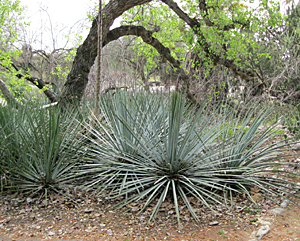
In March many of the trees and shrubs are blooming like this Nivins barberry;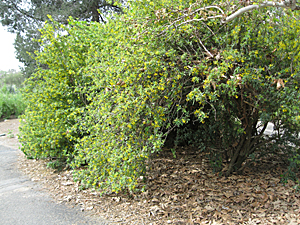
The flowers clusters are lovely against the green leaves.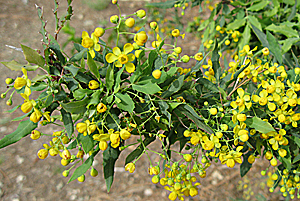
The yellow leaves of Berberis ‘Golden Abundance’ add color without flowers.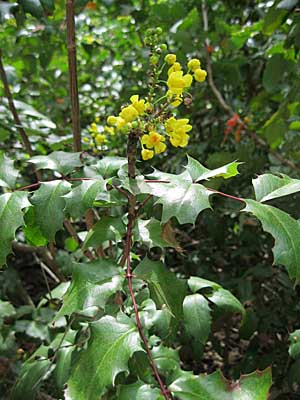
Fairy Duster adds pink to the scene.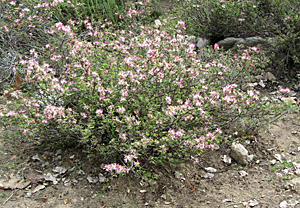
It’s fuzzy flowers are attractive to butterflies and hummingbirds.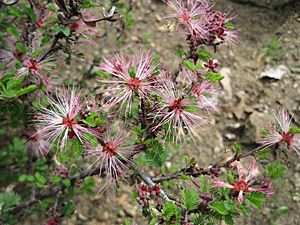
The thorny dessert apricot can reach up to 15 feet high. Its delicate pink flowers are fragrant and may produce edible fruits in late spring.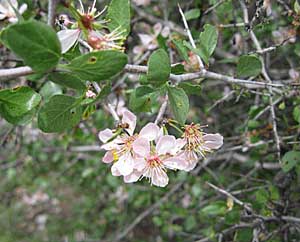
The bright purple-pink flowers of western redbud come out on the limbs of the trees before the leaves and create a great pink cloud.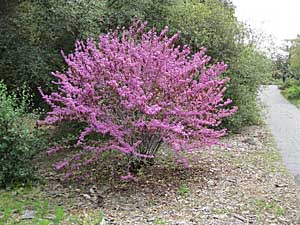
The flowers are tiny but numerous.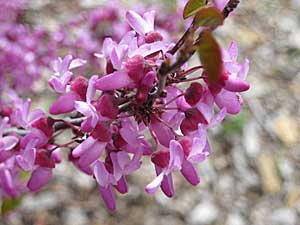
The long thin red flowers spill over the leaves of the low growing bush.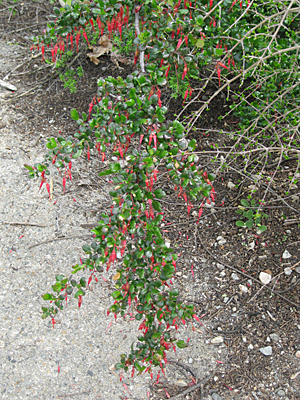
The stamens protrude above the corolla giving the flowers a distinctive look.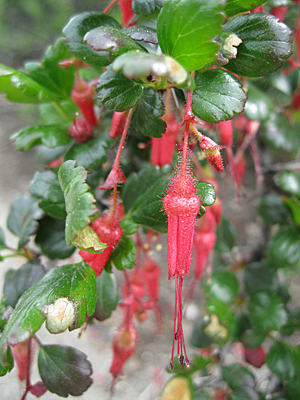
One of the most unusual shrubs was this one growing near a small pond.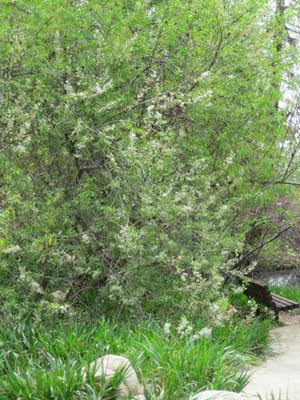
The fluffy flower parts were so dense they covered the ground where they had fallen and looked like great balls of cotton…or dust bunnies.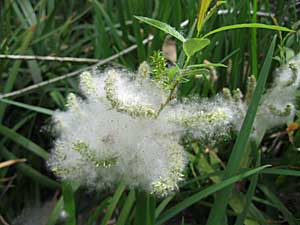
The most beautiful shrubs are probably the California lilacs. This blue one is a knock-out.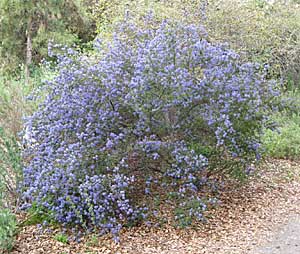
The individual clusters of flowers vaguely look like the lilacs familiar in colder climates.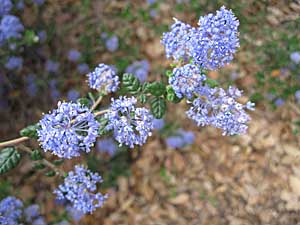
The white version of this lilac is beautiful too.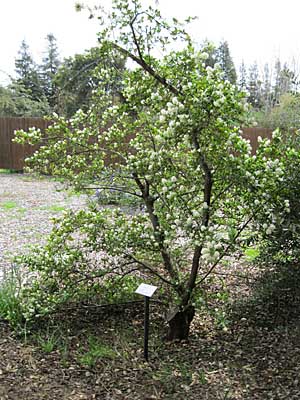
The flower clusters are quite fragrant.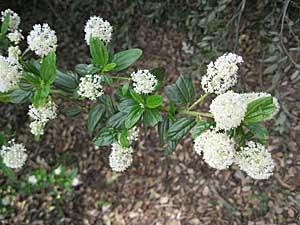
The narrow, waxy, gray-green leaves of the Island Tree Poppy are attractive year round in mild climates. The shrub can grow up to 18’ tall and is covered with flowers in spring.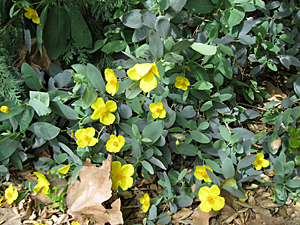
The graceful form of this California Flannel Bush will grow to 5’ tall and bears yellow flowers in spring.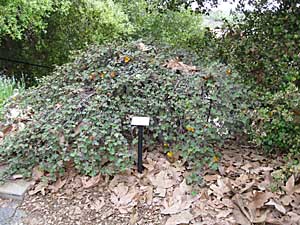
The flowers are yellow and each petal has a curved shape that comes to a point.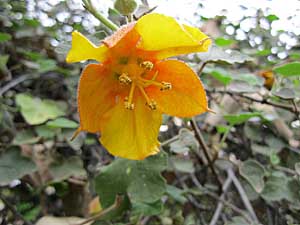
Sugar Bush is a very drought tolerant plant that grows 15 feet or more in height and width. The seeds and flowers can be soaked in water to make a lemonade-like drink.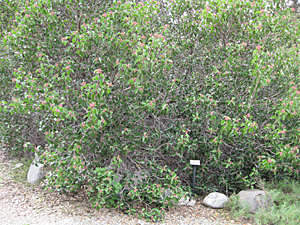
The pink buds open to white flowers.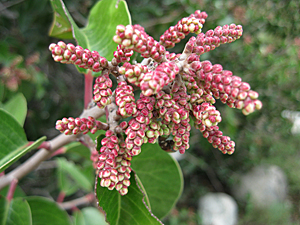
Several varieties of manzanita grow at the botanical garden from low ones hugging the ground to small trees.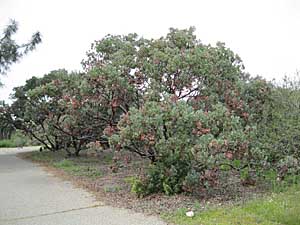
The red bark and twisted stems are spectacular.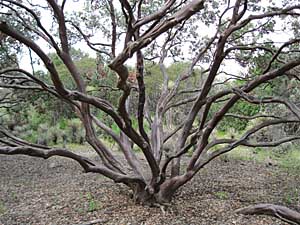
Their flowers resemble those of Andromeda.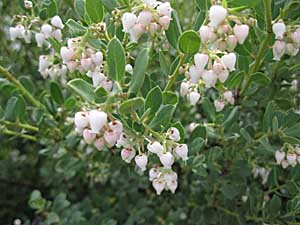
And the berries can be quite large.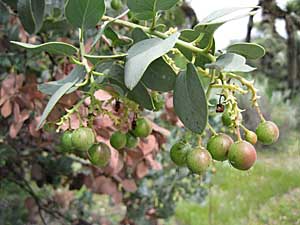
Acer negundo is one of the toughest shade trees in the garden.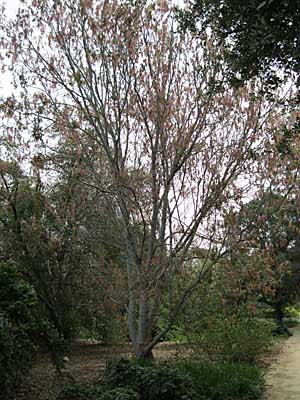
Its long fine red catkins cover the tree in spring.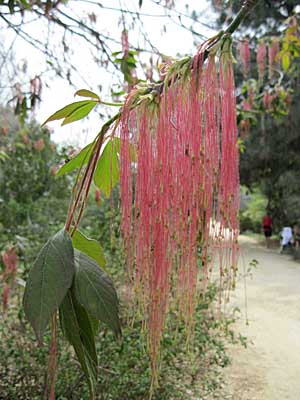
Less showy but very interesting is Crucifixion Thorn, looking quite splendid en mass and not threatening at all.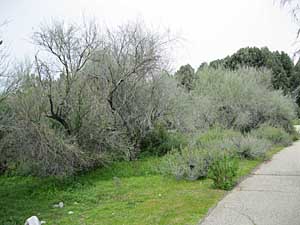
A closer look at the branches reveals fierce looking thorns.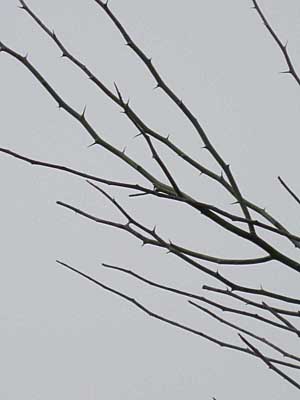
A stand of Four-needled Pinyon Pine created an inviting grove.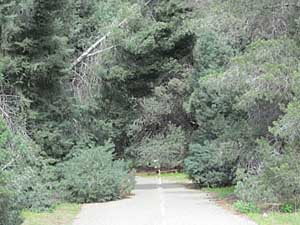
Yes, this plant produces pine nuts.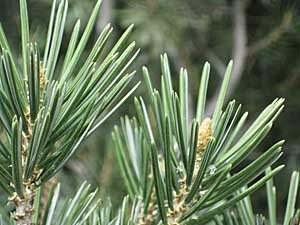
Coulter’s pine has long needles and huge cones.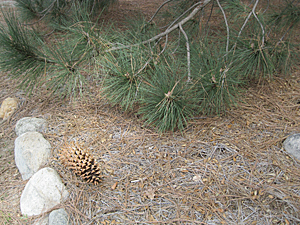
Note the pen lying along side the cone to give scale.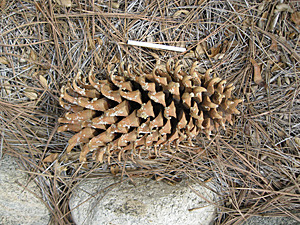
A very odd plant is the boonjum tree that looks more like a snake or a candle than a tree.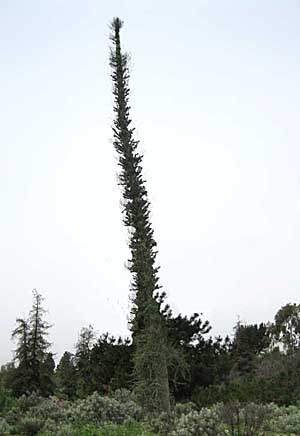
The Joshua trees have a mammalian look.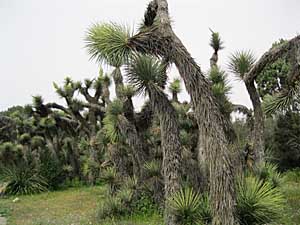
Some were in flower.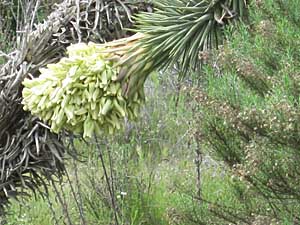
The California Fan Palm is California’s only native palm.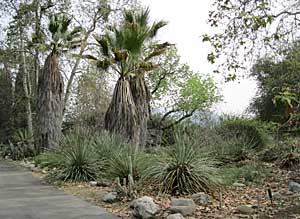
And the king of them all, the Redwood.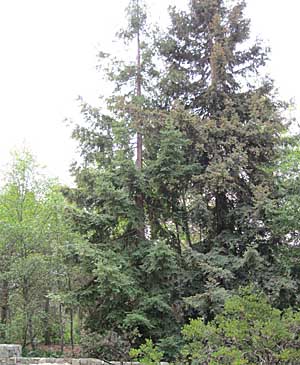
Many different cactuses grow in the garden including Beavertail Cactus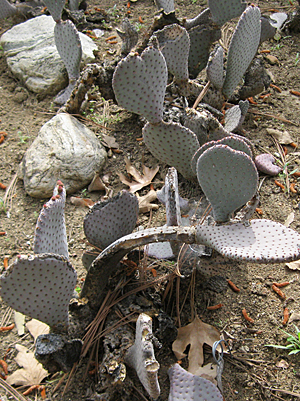
California barrel cactus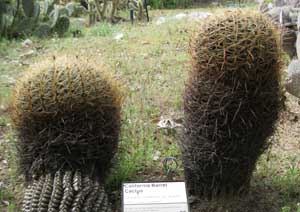
Mound Cactus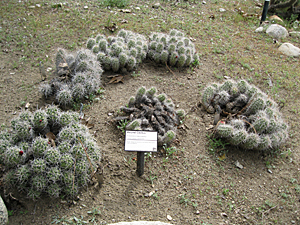
Pink Teddy Bear Cholla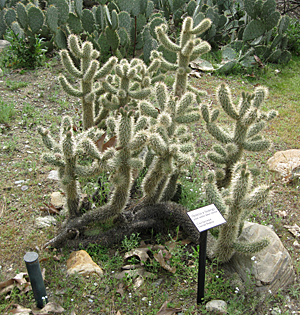
Coastal cholla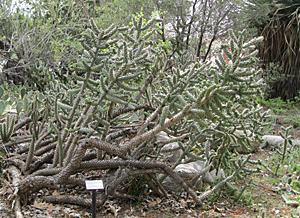
Mojave Prickly Pear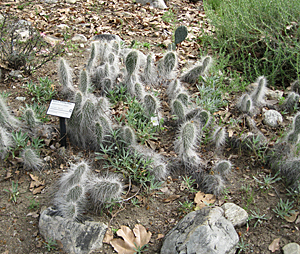
Buckhorn cholla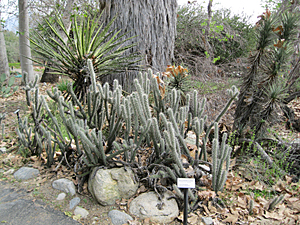
Several different kinds of agave inhabit the garden including Shaw’s agave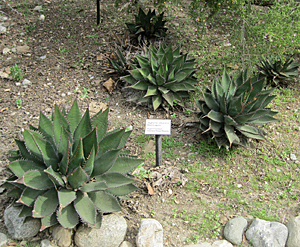
And this blooming one.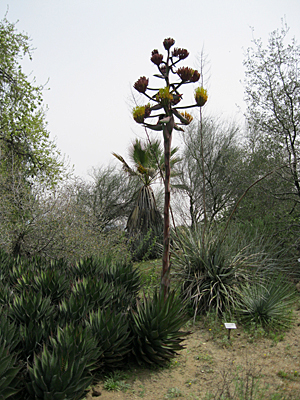
Some interesting succulents include: Hasse’s Liveforever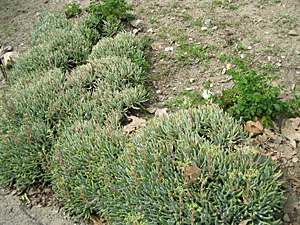
and Sticky Leaved Liveforever; they look like mounds of green beans.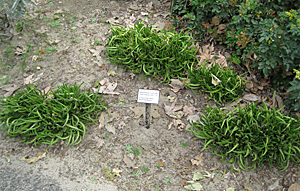
All through the garden, the flowers of herbaceous plants brighten the scene:
Monkey flower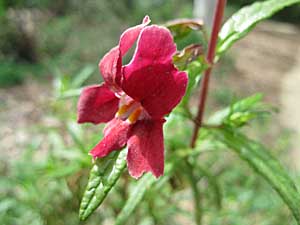
Iris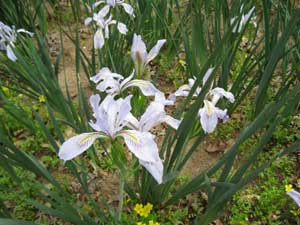
Blue Eyed Grass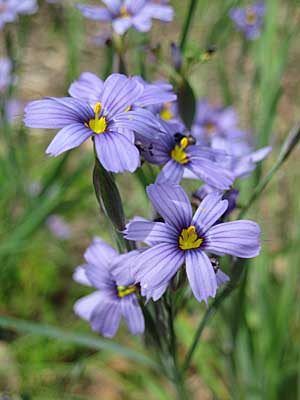
Lupines
Matilija Poppy
California poppies and Colorado four o’clocks
Yellow coastal sunflowers,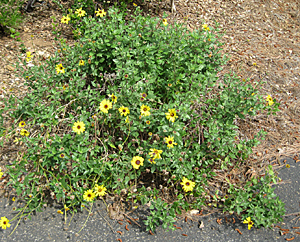
And many different sages including these.
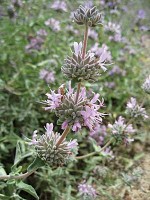 |
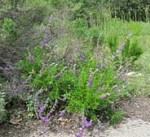 |
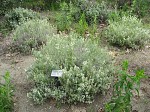 |
And don’t forget to take in the view occasionally; the San Gabriel Mountains are the backdrop for this richly planted garden.
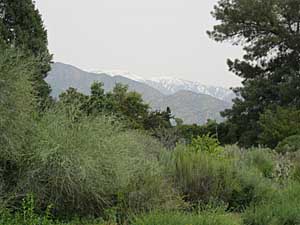

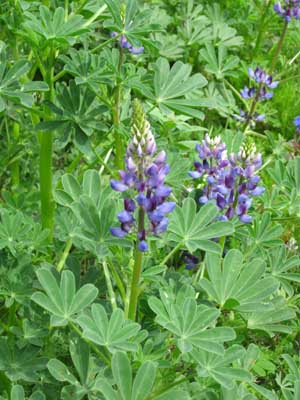
Hello;
The pics are very nice but I was looking for the tree that has pink, fan shaped blossoms. Maybe you know what it is.
till later,
Carolyn
Carolyn,
Is the plant you ask about one in my post or something you know about and want to see. I visited the garden in March and many plants were blooming but not all so you might be thinking of one that was not in bloom when i was there. i need more information to answer your question. Sorry.
Karen
Mimosa trees have a pink fan-shaped blossom